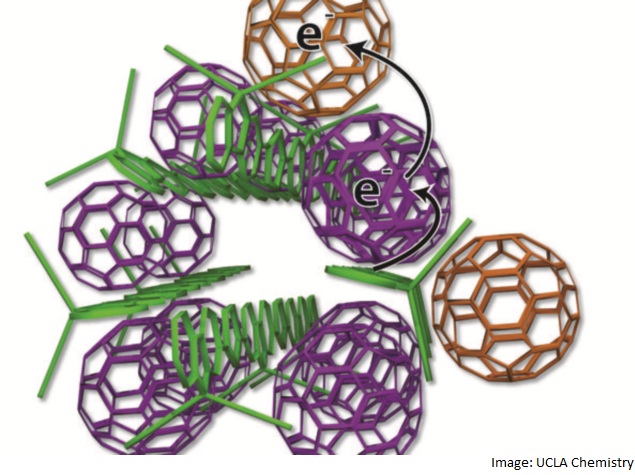- Home
- Science
- Science News
- New Low Cost Solar Panel Design Boosts Efficiency
New Low-Cost Solar Panel Design Boosts Efficiency

Scientists have assembled the components of the panels in such a way that they resemble the natural systems the plants use to tap the sun's energy.
This way, they could separate positive and negative charges in a stable way for up to many weeks compared to millionths of a second that the current method can separate the positive and the negative charges.
"In photosynthesis, plants that are exposed to sunlight use carefully organised nanoscale structures within their cells to rapidly separate charges," said senior author Sarah Tolbert, professor of chemistry in the University of California, Los Angeles.
"That separation is the key to making the process so efficient," Tolbert said.
The team's X-ray studies enabled them to see, at a microscopic level, which material design has the most ideal structure at the nanoscale for promoting this charge separation.
The results were outlined in Science. To capture energy from sunlight, conventional rooftop solar cells use silicon, which can be expensive.
The new system is composed of strands of a polymer that absorb sunlight and pass electrons to a fullerene, a spherical carbon molecule also known as a "buckyball".
The new design is also more eco-friendly compared to the current technology, as the materials can assemble in water instead of more toxic organic solutions that are typically used.
Get your daily dose of tech news, reviews, and insights, in under 80 characters on Gadgets 360 Turbo. Connect with fellow tech lovers on our Forum. Follow us on X, Facebook, WhatsApp, Threads and Google News for instant updates. Catch all the action on our YouTube channel.
Related Stories
- Samsung Galaxy Unpacked 2025
- ChatGPT
- Redmi Note 14 Pro+
- iPhone 16
- Apple Vision Pro
- Oneplus 12
- OnePlus Nord CE 3 Lite 5G
- iPhone 13
- Xiaomi 14 Pro
- Oppo Find N3
- Tecno Spark Go (2023)
- Realme V30
- Best Phones Under 25000
- Samsung Galaxy S24 Series
- Cryptocurrency
- iQoo 12
- Samsung Galaxy S24 Ultra
- Giottus
- Samsung Galaxy Z Flip 5
- Apple 'Scary Fast'
- Housefull 5
- GoPro Hero 12 Black Review
- Invincible Season 2
- JioGlass
- HD Ready TV
- Laptop Under 50000
- Smartwatch Under 10000
- Latest Mobile Phones
- Compare Phones
- OnePlus 15R
- Realme Narzo 90x 5G
- Realme Narzo 90 5G
- Vivo S50 Pro Mini
- Vivo S50
- OPPO Reno 15c
- Redmi Note 15 5G
- Redmi Note 15 Pro 5G
- Asus ProArt P16
- MacBook Pro 14-inch (M5, 2025)
- Infinix Xpad Edge
- OnePlus Pad Go 2
- OnePlus Watch Lite
- Just Corseca Skywatch Pro
- Acerpure Nitro Z Series 100-inch QLED TV
- Samsung 43 Inch LED Ultra HD (4K) Smart TV (UA43UE81AFULXL)
- Asus ROG Ally
- Nintendo Switch Lite
- Haier 1.6 Ton 5 Star Inverter Split AC (HSU19G-MZAID5BN-INV)
- Haier 1.6 Ton 5 Star Inverter Split AC (HSU19G-MZAIM5BN-INV)

















